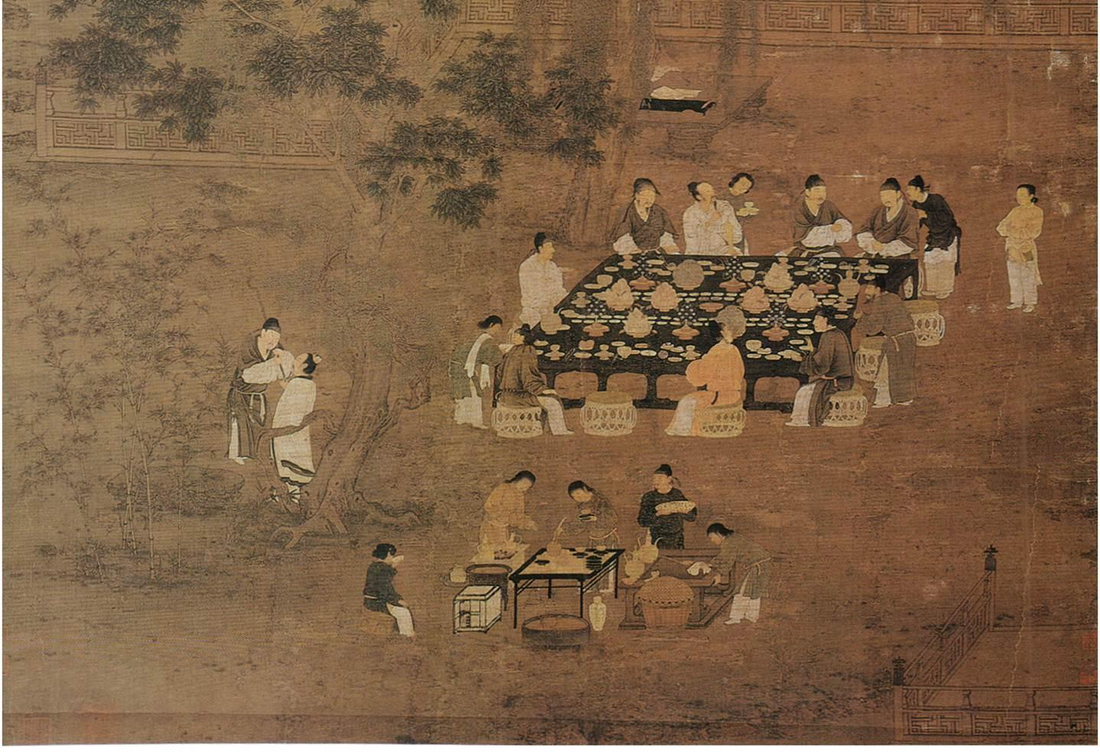
The History and Global Journey of Chinese Tea: From Ancient Forests to Modern Teacups
I. The Origin: The Legend of Pa Ai Leng and the Birth of Tea in Yunnan
The story of tea begins more than two thousand years ago in the deep forests of Yunnan, China. According to local legend, a tribal leader named Pa Ai Leng led his people through a time of plague. One day, while drinking water near a riverbank, he discovered the healing properties of wild tea leaves. Miraculously, the plague subsided, and he began cultivating these tea trees. This marks the earliest recorded use of tea, and the beginning of what we now know as Pu’er tea.
Scientific and historical records—such as references in the Compendium of Materia Medica—confirm that tea was used medicinally in ancient times. Yunnan remains one of the world’s original tea homelands, thanks to its unique climate and biodiversity, which gave rise to the large-leaf tea varietals ideal for Pu’er.

II. Dynastic Evolution of Tea Culture
-
Qin–Han Dynasty (over 2,000 years ago): Tea remains were discovered in the tombs of nobles at Mawangdui in Hunan, indicating its early role in aristocratic life.
-
Han Dynasty: Tea began to take on ceremonial and symbolic roles.
-
Tang Dynasty (1,200 years ago): Lu Yu authored the Classic of Tea, and the Silk Road facilitated the spread of tea across Asia.
-
Song Dynasty (1,000 years ago): The practice of whisked tea (dian cha) emerged, emphasizing aesthetics and ritual.
-
Ming Dynasty (600 years ago): Emperor Zhu Yuanzhang abolished whisked tea, encouraging loose-leaf brewing. This simplified tea preparation and expanded its reach.
-
Qing Dynasty (300 years ago): The practice of Gongfu tea brewing flourished, especially in southern China.
Throughout Chinese history, tea has been more than a beverage—it's been a philosophy and a way of life. Religious and intellectual traditions played a key role:
-
Buddhism: Monks used tea during meditation to maintain focus and clarity.
-
Taoism: Tea became a means to connect with nature and the cosmos.
-
Confucianism: Scholars used tea gatherings for moral cultivation, friendship, and reflection.

III. From the Ancient Tea Trees to Baiyunteahouse
Today, Baiyunteahouse's teas are cultivated in the same legendary regions where tea originated: the ancient forests of Laobanzhang, Yiwu, and Jingmai. These regions are home to centuries-old tea trees, preserved through traditional farming and respectful hand-harvesting. This continuity ensures not only the quality of the leaves but also the deep cultural heritage in every cup.
IV. Six Major Types of Gongfu Tea
All Chinese teas come from the same species, Camellia sinensis, but vary based on processing and varietals—especially the distinction between small-leaf (xiao ye zhong) and large-leaf (da ye zhong) types. Pu’er, made from the large-leaf variety, is central to the Gongfu tea tradition.
The six main types of Gongfu tea are:
-
Green Tea (unoxidized) – Fresh and grassy.
-
White Tea (lightly oxidized) – Delicate and subtle.
-
Yellow Tea (light fermentation) – Rare and mellow.
-
Oolong Tea (semi-oxidized) – Complex, floral, and toasty.
-
Black Tea (fully oxidized) – Rich and malty.
-
Dark Tea (post-fermented, including Pu’er) – Earthy, aged, and often compressed.
Pu’er tea, especially, is unique for its ability to improve with age. It is prized globally for its depth of flavor, digestive benefits, and collectability.

V. The Tea-Horse Road: The Global Expansion of Tea
The Ancient Tea-Horse Road (Cha Ma Gu Dao) was a trade route originating in Yunnan's Pu’er-producing areas like Jingmai, Yiwu, and Laobanzhang. Traders bartered tea for horses, reaching Tibet, Sichuan, Mongolia, Central Asia, and beyond.
-
Tibet: Tea bricks were boiled into butter tea—rich in yak butter and salt.
-
Inner Mongolia: Nomadic cultures brewed salty milk tea with strong, compressed tea leaves.
-
Southeast Asia: The Dian-Mian route carried tea into Thailand, Laos, and Vietnam.
-
India & Sri Lanka: Introduced to tea cultivation during British colonization; both now major global producers of black tea.
-
United Kingdom (17th century): Through the East India Company, tea was imported from China. It became a cultural symbol with the rise of “afternoon tea,” often served with milk and sugar.
